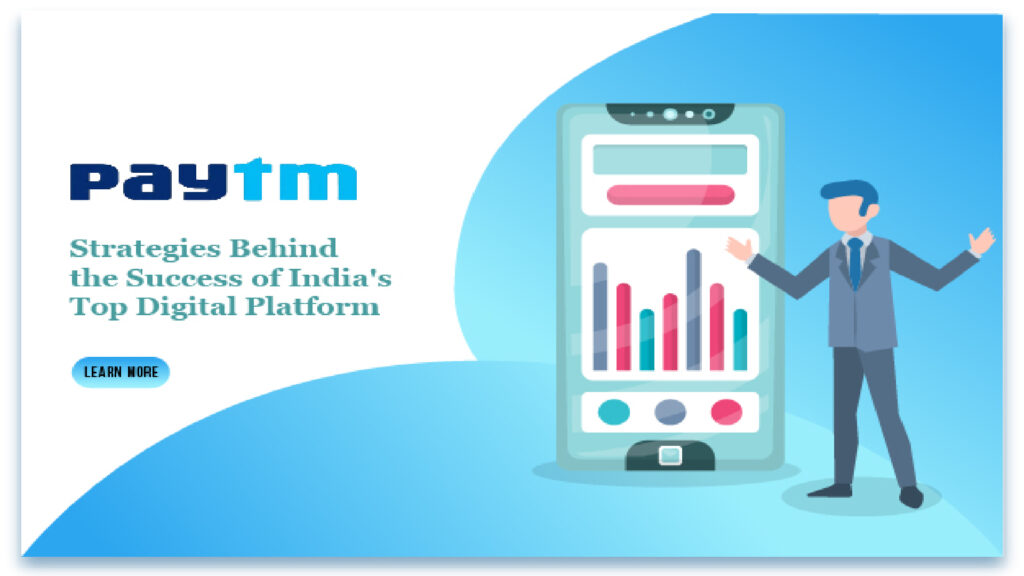Introduction:
Paytm has been the leading platform in India’s digital payments revolution, improving the country’s financial structure. Established in 2010, Paytm was a mobile wallet service that allowed users to make small online payments. It has grown into a global financial services provider offering services from digital payments to banking, ticketing, investing, and insurance throughout the years. In this blog, we will look into the beginning of Paytm, the challenges it faced, the solutions it executed, and the result of its innovation.
Origin of Paytm:
Paytm was founded by Vijay Shekhar Sharma at parent company One97 Communications with a dream to create a digital wallet platform that would make mobile payments easy and available for everyone. Paytm’s primary motive when it was founded was to provide mobile storage services, but its founders saw a larger and expanding market for digital financial services. This vision is slowly starting to succeed as Paytm expands its services to include payments, flight booking, and e-commerce all in one app.
Paytm’s landmark comes from the fast addition of smartphones and affordable internet services in India. This has allowed the company to focus on the growing digitally intelligent population and position Paytm as a simple and easy-to-use solution. But apart from these factors, Paytm faces some challenges to mass adoption in India’s cash-rich economy.
Challenges Faced by Paytm:
One of the key barriers Paytm faces is building trust and ensuring general adoption in a market where cash transactions are becoming a part of people’s daily lives. Digital financial literacy is low, especially among the elderly and the rural population. Since both consumers and merchants prefer the security of cash, a lack of familiarity with digital payment platforms leads to confusion and hesitation to switch. Creating a universal solution that can please all customers was a challenge for Paytm.
Another challenge is competition in the fintech sector. As digital payments become more common, other players like Google Pay, PhonePe and banks have entered the market with their products, increasing competition in the business world. For Paytm to stay ahead, it needs to become different in itself and create a unique value in the market.
Solutions Executed by Paytm:
1. Capitalizing on Demonetization (2016)
The most important moment in Paytm’s journey came during India’s demonetization in 2016 when the government declared bills of Rs 500 and 1000 as invalid. As people struggled to adapt to the cash crunch, the initiative created an urgent demand for digital payment solutions. The company’s slogan, “Ab ATM nahin, Paytm karo” (“Don’t use an ATM, use Paytm”), became a household name, motivating millions to try the platform. Positioning itself as a replacement for cash, Paytm saw growth in user adoption during and after demonetization.
2. User-Friendly Interface
Aware of the need to serve diverse customer needs, Paytm has created an easy-to-navigate interface. This design choice makes the platform accessible to both tech-fan and first-time users, making sure that people from different backgrounds can easily use the app, especially helping digitally simple users in rural areas understand and accept mobile payments. Paytm’s commitment to user experience has become one of its strongest competitive advantages as it fills the gap between technology and the consumer.
3. Strategic Partnerships and Expanding Utility
Paytm realized in advance that its digital wallet would be more profitable if it was used for more than just mobile payments and online shopping. Therefore, the company has partnered with several service providers, merchants, and retailers. These partnerships allow Paytm to use its wallet as a payment option across a range of platforms, from retail to transportation, from utility payments to entertainment, and the practicality of its app makes it a required tool for users. Partnerships with banks and financial institutions allow Paytm to offer more financial services like mutual funds, insurance, and even Paytm Payments Bank (India’s first zero-deposit digital bank).
Business Outcomes:
Paytm’s clever response to the challenges it faced has succeeded and yielded notable results. The company’s user base has grown to over 350 million registered users in 2020, making it one of the largest digital payments in India. The rise of users after demonetization has connected Paytm’s supremacy in digital payments and it is rapidly modifying into other financial services.
Paytm has developed from a mobile wallet to a full-fledged financial platform, expanding its services into areas like banking, wealth management, insurance, and loans. This diversification has increased its earnings and also made the company a one-stop destination for digital financial mixtures in India. The company’s success is a testament to its ability to adapt to the market, leverage resources like monetization, and focus on user-centric design and collaboration.
Furthermore, to increase users and services, Paytm has made an everlasting impact on the Indian economy by driving digital financial inclusion. Millions of people who were previously unbanked can now access finance through Paytm, making India a larger destination for cashless economic growth.
Conclusion:
Paytm’s journey from the mobile recharge chain to financial services demonstrates how innovative solutions and timely strategies can overcome technical challenges in business. Paytm has transformed the digital payments landscape in India by solving trust issues, simplifying user experience, and leveraging external factors like demonetization. Currently, it is a leader in the fintech space, continuing to expand its offerings while maintaining its strong foothold in the digital economy.

